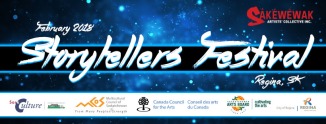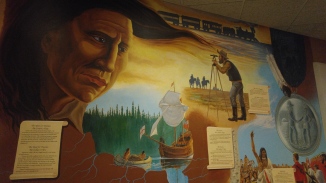
Teachings to follow as long as the sun shines, the grass grows, and the rivers flow.
How did I do on the alliteration?
For my final ECCU 400 project I have made a top ten list to highlight my main enlightenments over the course of this class. A lot of what we discussed was not new knowledge for me, but I believe that when exploring topics of justice and marginalization it is always good to be reminded, and to be open to looking at things in new perspectives, and this class certainly delivered that. PS – If you see links, please look at them and just skim the blog articles. I don’t expect you to seriously read all that is mentioned here!
I promised myself I would be to the point to keep this more effective. KGO.
Indigenous issues were in the past – BUT THEY ARE ALSO IN THE PRESENT.
To count them only as historical grievances means avoiding fixing the injustices going on today. Think in contemporary terms. We need to act now, not just learn about it in history books. Horrible reserve conditions, missing and murdered children and women, blatant and systemic racism – it is all here, and very close to home.
Kindness is important in achieving goals for justice.
Pam Palmater did not talk, in her speech, about raising pitchforks and going after racists. She talked about the importance of a “good old fashioned apology”. The gentleman at the Legislative building did not ask us to take up arms and go in guns ablazing. He asked for awareness of the issues we face, and to pass it on to others. Even Angela Davis, although she talked about things as radical as getting rid of policing as we know it, was calm and rational through all of her speaking. She expressed how, to help women overall, we need to reach down and offer hands to those of us who are lower on the triangle hierarchy of power right now, to truly break the ceiling of patriarchy. I have learned from people (the greatest resources) this semester that self-care, advocating for those who are marginalized, and personally seeking and offering ways to help, are good ways to approach social justice, and too, reconciliation. And don’t confuse kindness with passivity and inaction – you can act, but you can act with kindness. You can show strength in kindness. I do talk about scenarios where I understand when using force to demand rights is best – after all, some people have been trying peace for years and it has not gotten them anywhere.
However, if we are in a position of privilege to talk with other privileged peoples about changing mindsets, I think kindness is a first, because is our end goal a world of hatred, or a world of love? I find that getting angry is so tiring and draining, spiritually. I would rather seek my inner power from positive sources, live love, laughter, and art. I expect many oppressed peoples would like to feel this way, too – but can’t, because they need to fight a daily fight to be treated as equal.
We need to hold people accountable when it comes to oppression or ignorance of any kind.
State facts, don’t attack personally, but defend why someone’s behavior is racist in a certain moment. Point it out, don’t let it pass. Angela Davis holds people accountable – for example when she said that YOU, as a man, might not demean women behind closed doors, but as a man who wants equal rights you still have a duty to call ANY OTHER MEN out on acting that way. If you aren’t going to be a teacher, a voice to counteract the hate, nobody is going to learn. And it isn’t going to be easy. I have begun honest (and messy) conversations with family about racism. I am starting to realize moreso who to keep in my life that will push me further, and those who will hold me back if I give them the chance. Some other situations where I have learned firsthand the power of being accountable: the bake sale “pressure” at the ReconciliACTION event to go beyond passively throwing in money, to actively educating myself on a topic; and the day with the Justice for Our Stolen Children Camp where I saw Angela’s propositions be put into practise.
Find personal connections and hold on to them to help you relate.
I talk in this blog about the personal perspectives that I bring to the haunting past (and present) of residential school abuse. I am a person who believes that pain is pain, and to compare levels of pain and “whose is worse” does not get either person healing. The more we can relate to it and see… “You are suffering through something, just like I suffered through something, and this is how I felt” the more I believe we can heal together and help one another. This is why I have to nod along when survivors say that they find healing in sharing their stories to people who can listen (and understand and sympathize). I also understand how vulnerable those survivors must feel sharing stories to a large number of people who deny that residential schools were a cultural and physical genocide, and claim people are milking it. Do these people even realize how cold it is to judge another person’s grief on a scale of importance? All trauma and grief is heartbreaking, and requires love and support to overcome.
Follow the news.
CBC: Unreserved, CBC: Indigenous, APTN. Particularly, news from a marginalized group about a certain group. Follow diverse news, not just what pops up on your Facebook feed (yikes!) Yes, stories about Indigenous peoples will make it into mainstream news, but are not going to give you the most comprehensive and accurate understanding of their culture and current issues. When I asked Sylvia Smith what I could do, this was her best advice, and still is. News is not static – it is not one single webpage of “Indigenous Peoples Facts” that can be current today, and outdated tomorrow. The news is evolving and growing, just as we the people are. And most importantly, make sure you are balancing bad news with good news. If all you have heard about is how the government is failing Indigenous peoples (they are and I do not want to undermine the tragedy of this) you will need a pick me up – so read about the wonderful contemporary Indigenous cultures in Canada. Read about a local and recent powwow, or a reconciliation art contest and its winners. If you look for it, you will find it, and it will help you realize how strong and beautiful Indigenous peoples are.
Find your niche – your purpose.
You can support everything reconciliation based but if you find a particular passion – follow it as far as it will take you. As Ann Perry says you may not make a lot of friends – but in the end, I think you will make ones that count. I have been talking with my mom at length about this gentleman who is raising awareness and encouraging discussion about justice and reconciliation. She told me, “You know, people say he needs to get a job – but what he is doing right now is his purpose in life.” She thinks it is an important purpose and that he should be honoured, after he has left, by having the teepee remain as a community meeting place. She also thinks there should be a plaque in Wascana honouring what was done there. I am proud of my mama for thinking of something I didn’t even think of. I am happy that Prescott has found a purpose and is touching so many lives.
Do the “little things” that add up.
Write a letter to the PM. Go to Reconciliation or any kind of social justice workshops. Go to powwows. Take opportunities, make time for opportunities. I helped take a man home in a blizzard, and my perspectives on what little things and big things are changed considerably. I was going to buy hand soap that day, and instead I helped a man find shelter. It took 30 minutes out of my day. Little thing or a big thing – you decide. I have had so many great opportunities for learning because of this class – when I went to the museum I was sorely disappointed with the material BUT, once again, people are the best to learn from. I walked through the museum with a young Cree boy and an older relative, and he taught him “amisk”. I (being snoopy) asked what that meant and he replied, “It is beaver, in Cree.” It always pays to ask – how I know the local name of my favourite wild creature!!
Read Chelsea Vowel.
I really have to say no more. Just read Chelsea Vowel. Here is her online blog, and buy Indigenous Writes. She speaks with a passion for social justice that many people may write off as snarky, but she speaks the truth and everything she says I have to nod along to. My favourite thing I have read from her is in Indigenous Writes, when she suggests that, if we are not happy with how we are referred to in English terms (settler, Caucasian, non-Indigenous, white, etc.) we should look up what we would be called in a local Indigenous language. This incited anger in me as I realize “No, I want to be called by a name of my choosing” yet she is pointing out how this is essentially what colonial settlers have done to marginalized groups for centuries – choose their own names, for a different group of people.
If you are going to be in it, be in it. Show integrity.
For example, Prescott highlighted a serious issue when he said that all of the fancy “modern” institutions are doing land claims, acknowledging and “honouring” they are located on traditional First Nations land. But as soon as First Nations peoples motion a want to actually make use of their rights, the people and their systems get nervous and oppositional, or dig their heels in. I think I have done a good job showing integrity this class.
Navigate carefully the waters of cultural appropriation. If you like Indigenous art, go and support Indigenous artists right from their independent shops. Put your money where your mouth is. Buy their art. Your money will make a difference in the lives of that Indigenous person and their families. As Pam Palmater says, if you want to help, tell us how: can we have land? Money? Time?
Pass on your experiences to your students. Inspire them.
Tell them your good stories, your heartbreaking stories – tell it all, and give them avenues to begin their own journeys. Show them 150 ways to reconcile. Explore the news with them. Take them to Indigenous cultural events, and yes, make sure they learn about the injustices being done to Indigenous peoples too. Check out Project of Heart with your students and teach them about things like Jordan’s Principle. As Sylvia Smith says, “Speak from the heart”, because everything else “You can flush.”
#thisisnottheend #thisisjustthebeginning





